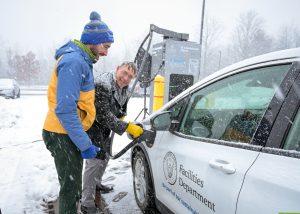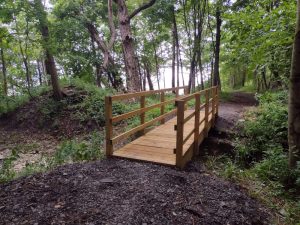POTSDAM — Students in Clarkson University’s Analysis of Aircraft Structures class will analyze World War II aircraft that museums in both the U.S. and Canada will provide. Craig Merrett, assistant professor of mechanical & aeronautical engineering, had to redesign the course, since he’s teaching it this semester in an online format, Clarkson said. For the […]
Get Instant Access to This Article
Become a Central New York Business Journal subscriber and get immediate access to all of our subscriber-only content and much more.
- Critical Central New York business news and analysis updated daily.
- Immediate access to all subscriber-only content on our website.
- Get a year's worth of the Print Edition of The Central New York Business Journal.
- Special Feature Publications such as the Book of Lists and Revitalize Greater Binghamton, Mohawk Valley, and Syracuse Magazines
Click here to purchase a paywall bypass link for this article.
POTSDAM — Students in Clarkson University’s Analysis of Aircraft Structures class will analyze World War II aircraft that museums in both the U.S. and Canada will provide.
Craig Merrett, assistant professor of mechanical & aeronautical engineering, had to redesign the course, since he’s teaching it this semester in an online format, Clarkson said.
For the past four years, students in the course have applied structural analyses to an aircraft in a semester-long group project with teams of students each studying a different aircraft.
This year, Merrett has “enhanced” this aspect of the class’s online version in commemoration of the 75th anniversary of World War II’s end and the 80th anniversary of the Battle of Britain. Ten aircraft museums across the U.S. and Canada have agreed to participate in the group projects by offering one aircraft from their WWII collection for a group to analyze.
“Connecting with the museums was driven by COVID because I wanted to find a way to make an online course more engaging,” Merrett said in a statement. “Having access to Zoom provided the infrastructure needed to make the project a reality.”
The students will interact with the museum’s curators and restoration experts on a regular basis to learn the history of each aircraft and collect technical data to complete their analyses.
Participating museums
The 10 participating museums are: Alaska Aviation Museum in Anchorage, Alaska; Canadian Warplane Heritage Museum in Mount Hope, Ontario; Combat Air Museum in Topeka, Kansas; Cradle of Aviation Museum, Garden City on Long Island; Flying Leatherneck Aviation Museum in San Diego, California; National Air Force Museum of Canada in Astra, Ontario; National Naval Aviation Museum in Pensacola, Florida; New England Air Museum in Windsor Locks, Connecticut; National Warplane Museum in Geneseo; and Planes of Fame Air Museum in Chino, California.
Several other museums, like the National Museum of the United States Air Force and the National Museum of the Mighty Eighth Air Force will connect with the class during their project presentations in October, Clarkson said.
Merrett noted that the project will help the students develop their structural analysis skills for a real aircraft, and their communication skills for both technical and non-technical audiences.
“It will also help our students to feel more connected at a time when many may be restricted to a few rooms,” he adds.
Merrett says that the museums are “excited” by the opportunity since they had to cancel or reduce their planned WWII commemoration activities due to COVID. “Working with our students will enable the museums to recognize the anniversary through a different medium.”
Most of the museums usually interact with K-12 classes and have not interacted with a university engineering program before, so they are eager to explore the new educational opportunity.




